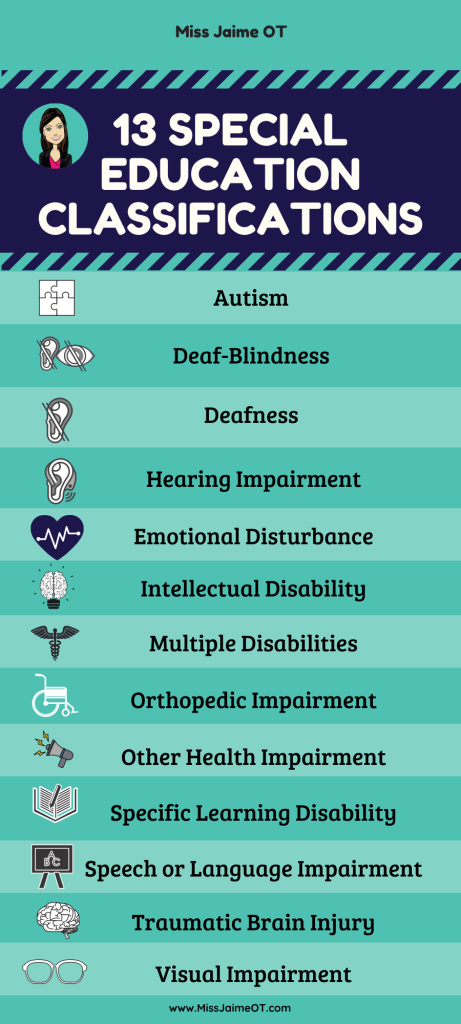
“Will Mason be labeled Special Ed forever?”
“Is this a stigma that will follow Emily all the way to college?”
“Will she even get into college?”
“What exactly does this mean for my child’s social life?”
Hold Up, Momma!
Dealing with the Special Education process can be overwhelming, upsetting, and let’s face it… CONFUSING!
Parents often feel stressed or torn about bringing their child to the Special Education Committee. But it is NOT a bad thing.
It can be a total blessing to finally get the answers to the questions you’ve been asking yourself…
“Why is it so hard for Mason to sit and do his homework?”
“Emily knew these math facts perfectly. How could she fail the test?”
“He’s falling behind. Will he be ready for middle school?”
Asking your child’s school for help in identifying their strengths and weaknesses will help YOU as well as your child. So, many children receive some kind of service in school; counseling, RTI, speech therapy, math extra help…
The list goes on and on. Parents often remember what it was like when they were in school. The “Special” kids left the room or even worse, went to a different school.
It’s just not like that anymore—Thank Goodness!
Receiving Special Education Services at school is simply a way to help your child use their strengths (which the school identified through testing and data) to catch them up in their weak areas.
Feel better? Good.
Steps to get started with the Special Education Process:
Step 1: Parents, school district staff, or others request an evaluation
Parents, school personnel, students, or others may make a request for an evaluation. This means they suspect a disability. If a parent requests an evaluation to determine whether their child has a disability and needs special education, the school district must consider this request and complete a full individual evaluation.
After the evaluation, the committee (including the parents) gathers to determine if the child meets the criteria to be classified as a child with a disability. This meeting is called an Initial Eligibility Determination Meeting or a Multiple Disciplinary Team Meeting. A school can deny/refuse to conduct an evaluation for a variety of reasons*, but the school is legally required to provide the parents with a written explanation of that reason. Schools are also required to present a copy of that state’s parental rights.
Step 2: Parents agree in writing to this evaluation
After the meeting, a document called a Prior Written Notice (PWN) will list each test/assessment/checklist/questionnaire that will be used and/or administered to the student and the professional responsible for completing and/or interpreting that information/test results. Testing can begin once this signature is received from the parent and the school has 60 days (per IDEA) to complete the testing. Some states have shorted it to 30-45 days to complete testing.
Step 3: Testing and summary report completed, meeting held
All results and summarized information will then be written into an Evaluation Report. The team will then meet for an “Evaluation Results meeting” to review the results of the evaluation and determine if the student is eligible for special education services. It can be difficult to understand your child’s test scores. Learn more here.
Step 4: Eligibility determination
After reviewing all the data and test results in the evaluation summary, the team decides if the student is eligible AND qualifies for special education services. The student qualifies if they display a disability in one of the 13 categorical disability areas defined by IDEA. Establishing eligibility for services under IDEA is a two-pronged process. The team of qualified professionals and the parent must determine that the student meets both of these criteria in order to be eligible for special education services:
- The student must be determined to have one (or more) of the 13 disabilities listed in the IDEA.
AND - The student must, as a result of that disability, need special education in order to make progress in school and in order to receive benefit from the general education program.
An educational classification or category is NOT a medical diagnosis. The student has been found to qualify for an educational categorical label based on an evaluation report. Sometimes, students may have an outside medical diagnosis (such as ADHD), but that doesn’t mean they’ll need special education services. The student must show a NEED for these services. On the other hand, a student may not have a medical diagnosis, but still qualify AND need special education services (for example, Autism).
The 13 Categorical Disability Areas

1. Autism
2. Deaf-Blindness
3. Deafness
4. Hearing Impairment
5. Emotional Disturbance
6. Intellectual Disability
7. Multiple Disabilities
8. Orthopedic Impairment
9. Other Health Impairment
10. Specific Learning Disability
11. Speech or Language Impairment
12. Traumatic Brain Injury
13. Visual Impairment (including blindness)
*Why would a school deny or refuse to evaluate a student?
● The school does not SUSPECT a disability and believe there is no evidence of a disability to test for.
● The student was recently, already evaluated and did not qualify.
● The student just started school and needs to adjust more. The team needs to have data to show this isn’t just an adjustment, but a true underlying disability issue.
● The school is providing non-special education interventions, supports, or help and the student is making progress with this support. (ie: RtI, MTSS, Title 1 Reading Math/Reading Corps, extra
help by volunteers or staff instructional coaches, etc.).
● If a student moves in from another State, the guidelines for qualifying may be different.
● A 504 Plan or Health Plan may be able to provide the student what he/she needs instead.
A parent can always challenge this, as outlined in their Parental Rights information. However, if a parent is refusing the evaluation, the school CAN NOT conduct an INITIAL evaluation without a parent’s signature.
A RECAP
Remember, an educational classification as one of these 13 disabilities is not the same as a diagnosis. The school can’t diagnose your child, only a doctor can! This classification is simply a way to describe what interferes with your child’s learning.
Parents shouldn’t avoid asking for help because they fear a stigma. Special Education services can help your child by “bridging the gap” between them and their peers. The steps are listed above. Just get started.
ABOUT THE AUTHOR

Stephanie Mahal recently joined the Miss Jaime OT team. She is an Occupational Therapist who specializes in supporting students in K -8th grade who have physical, neurological, sensory, mental, and emotional conditions that impact their ability to access their education and community. She has over ten years of experience in both school and medical settings and currently works in the public school district, south of the Twins Cities, in Minnesota Low Incident Project School-Based OT and PT Community of Practice. She received her Master’s in Occupational Therapy at the University of Minnesota-Twin Cities and completed her fieldwork at the Mayo Clinic in Rochester, MN. Stephanie is honored to serve her students, staff, and fellow Occupational Therapists by using her skills and passion for accessibility and inclusiveness while creating that ‘just right challenge’ to be successful in all areas of life. When not at work, Stephanie and her husband John spend their time cheering on her middle-school-aged son and daughter at all their sporting events and activities!
